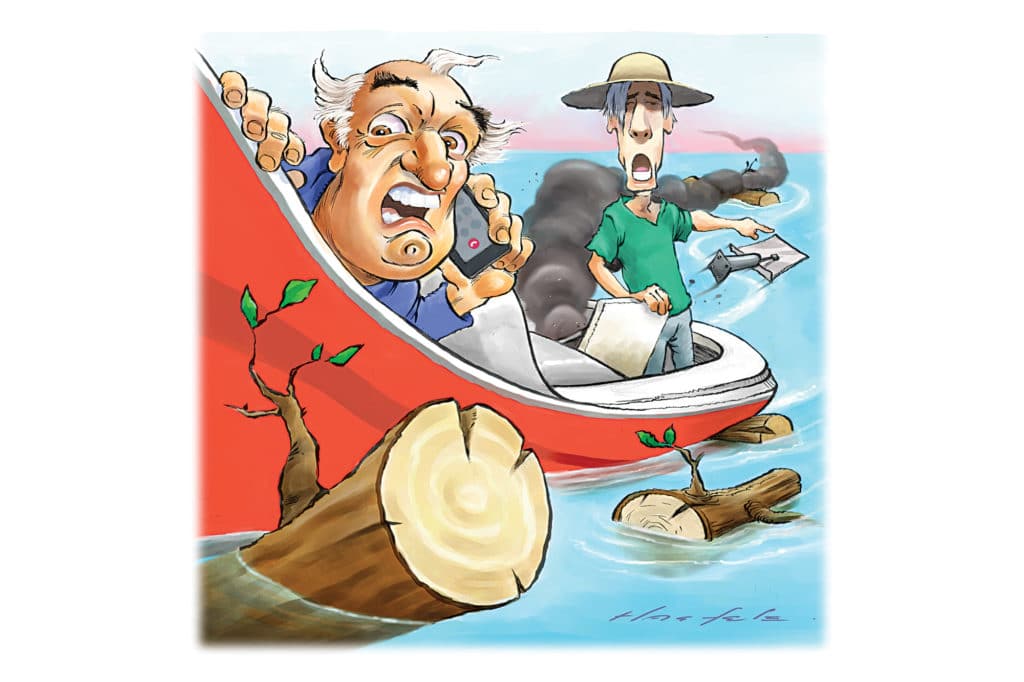
“Gotta go, call ya back!” my pal Tom barked. He was on a voyage from Florida to New England for the season. I’d suggested that he hire a captain to deal with the boring stretches, but he’d insisted that taking the helm would be an adventure. Now, in a remote leg of “the Ditch” (aka the Intracoastal Waterway), he had found an adventure for sure.
Tom has been a boater his entire adult life; however, tending to the worries of building a business left him little time to manage his fleet. He’d delegated bothersome boating chores. Now retired with time to spare and a can-do attitude, Tom insisted on a hands-on delivery. I was enlisted to provide phone support.
He’d tricked a college roommate he hadn’t seen in 50 years into serving as a crewmember. While a good shipmate, the poor fellow had never set foot on a boat and had no stomach for the sea. Following a field promotion to helmsman, he’d accidentally grazed a log-littered gutter of the Ditch.
“Coyle, the vibration is a bit less above 2,000 rpm,” Tom told me. “I think she’ll be better off at speed. Gotta stay on schedule.”
I suggested the possibility of shaking the engine mounts and shaft seals into submission. “You worry too much,” Tom groused.
“At least take a look in the engine room and make sure things aren’t wiggling about,” I insisted.
“Gotta go, call ya back!” Tom said.
“Seems like the starboard tab is stuck down, but the boat is 2 knots faster when it’s leaning 10 degrees to port,” he told me on the next call.
Read More from Jay Coyle: Tell Tales
I suggested that Tom contact the boat’s designer and share the potential breakthrough in marine design—or maybe check to see if the port tab was still there. “Gotta go, call ya back!” Tom replied.
“Coyle,” he said during our next confab, “both the bow and the stern thruster crapped out this morning.” I asked if he had checked the breaker. “Of course,” Tom said. I asked if he had checked the manual (knowing that Tom says manuals are for amateurs). “I’m underway,” he grumbled. “I can’t take my eyes off the road. I’ll deal with it when I get to New England. Gotta go, call ya back!”
Yet another call: “Coyle, the port engine shut down right after the fire alarm sounded. Any ideas?”
“Shut down everything and check the fire-suppression system,” I said. “Don’t open the engine-room door.”
Tom had already sent his seasick crewman into harm’s way. Fortunately, the problem was a seized idler pulley and a burned belt. Tom tracked down a replacement three states away and greased an overworked technician to screw it on.
The remaining 500 nautical miles were uneventful.
Tom was secured in his slip and well into a bottle of red wine when the sunset caused him to reflect: “Managing a boat is a real pain in the ass, but it’s worth it. You missed a hell of an adventure. Why don’t you fly up here in the fall and join me for the ride down south?”
“Gotta go, Tom,” I said. “I’ll call ya back!”









